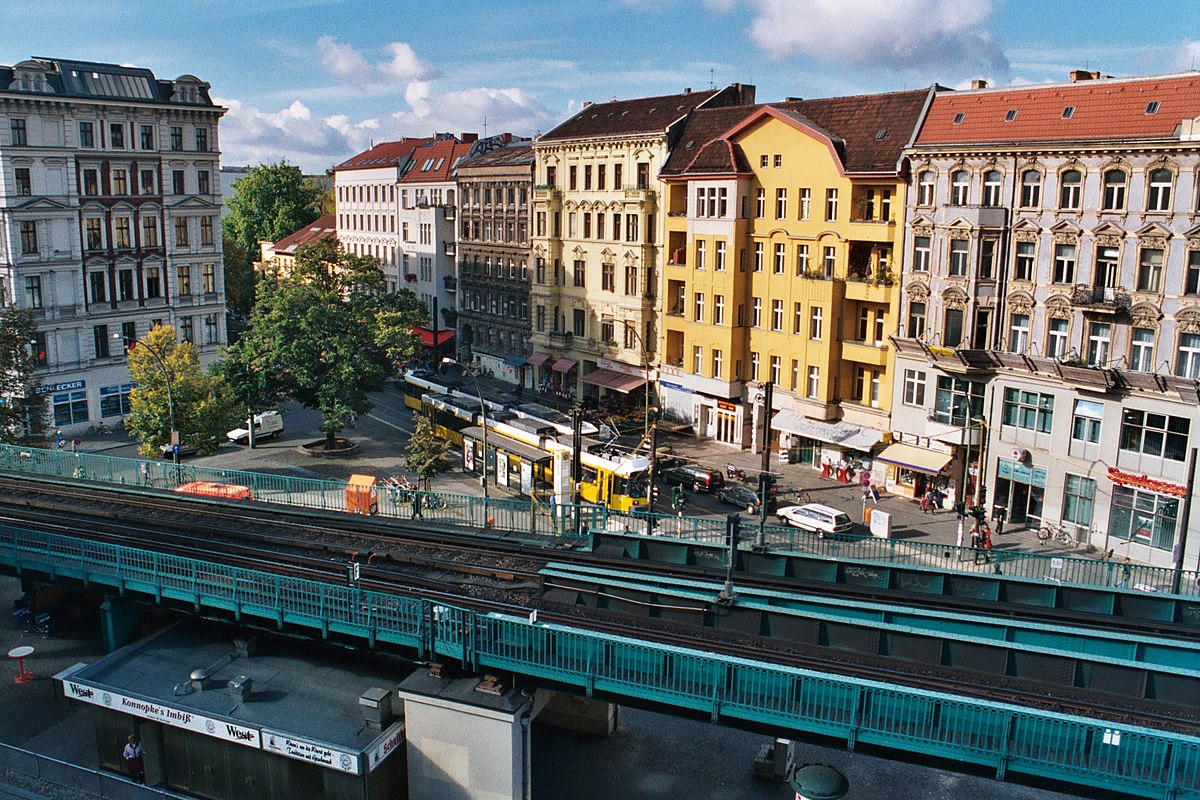 Behind the scenes of East Berlin there is a completely different city that's real, where people live, they work and play and which has nothing to do with the tourist attractions in the center. Most of it is in the suburbs, which are different from each other as are the suburbs in western cities. Easy to get to everywhere, by S-Bahn, Bahnem, by tram or bus and if you do not make the effort, you'll only see a fraction of the real East Berlin.
Behind the scenes of East Berlin there is a completely different city that's real, where people live, they work and play and which has nothing to do with the tourist attractions in the center. Most of it is in the suburbs, which are different from each other as are the suburbs in western cities. Easy to get to everywhere, by S-Bahn, Bahnem, by tram or bus and if you do not make the effort, you'll only see a fraction of the real East Berlin.
Prenzlauer Berg
If you're already in town, you should definitely go to Prenzlauer Berg. This run-down working-class neighborhood stretches to the northeast of downtown, and is the hidden heart of the city. During the war, she was the subject of fights, but it was not reduced to ruins and most of the tenement houses built at the turn of the century, to accommodate an ever-growing population of factory workers, still standing. Lots of lonely buildings with overgrown Hinterhofe (courtyards) looks like, as if they hadn't been restored since the war, and you can still see the damage from the Battle of Berlin on them.
To get to Prenzlauer Berg go to the U-Bahn station Dmitroffstrasse or Schonhauser Allee. In a maze of run-down streets between Schónhauser Allee to the west, Prenzlauer Berg in the east, Dmitroff Strasse to the south and Wisbyer Strasse to the north, you'll find some of the best cafes in the city. Thu Prenzlauer Berg, similar to Kreuzberg in West Berlin, many alternative lifestyles and artists who wanted to live on the margins of GDR society came, which was not as easy as in West Berlin, if we consider the totalitarianism of the state in the former communist countries.
One of the most famous streets is the 19th-century Husemannstrasse, with many tenement houses. After the war, it was restored to its original state and transformed into a kind of open-air museum of old Berlin. There are many shops and cafés with a 19th-century design on Husemannstrasse, but prices and commodities are modern. There is also an expensive antiques shop and a stable, where you can rent a horse-drawn cart, if you really want to get into the 19th century atmosphere.
To get there, take the U-Bahn to Dmitroffstrasse or walk from Rosa-Luxemburg-Platz (about 20-25 minutes). There are also some of the best museums in East Berlin on the same street.
Museum of Berlin Workers' Life around 1900 (Working Class Life Museum, wt. i czw.-nd. 11.00-18.00, Wed. 10.00-20.00) at number 12, focuses on the living conditions of the working class at the turn of the century; reconstructed apartment with a historic interior and furniture recreates the atmosphere of crowded tenement houses.
There is also a section devoted to allotment gardens, which for many Berliners working in factories were a return to their rural roots and an opportunity to enrich their diet with fruit and vegetables from their own plantation.
When hard times came during the First World War and beyond, these plots saved many Berliners from starvation, and some families even lived in nativity scenes on plots during the housing crisis of this era.
Although the museum is mainly devoted to the turn of the century, there is also a section devoted to the Nazi attacks on the workers movement in the 1920s and 1930s.
A few houses away, at Husemannstr. 8, is the Friseurmuseum (Hairdressing Museum), interesting and fun. It is a private institution, whose curator is a real enthusiast and will personally show you, if you express interest.
Opening hours are not specified, but knock on the door and if anyone is inside, then you should be shown.
A word of caution on Prenzlauer Berg: it gets a little dangerous after dark. Seizures happen, and if you look unconventional, local skins are aggressive and racist.